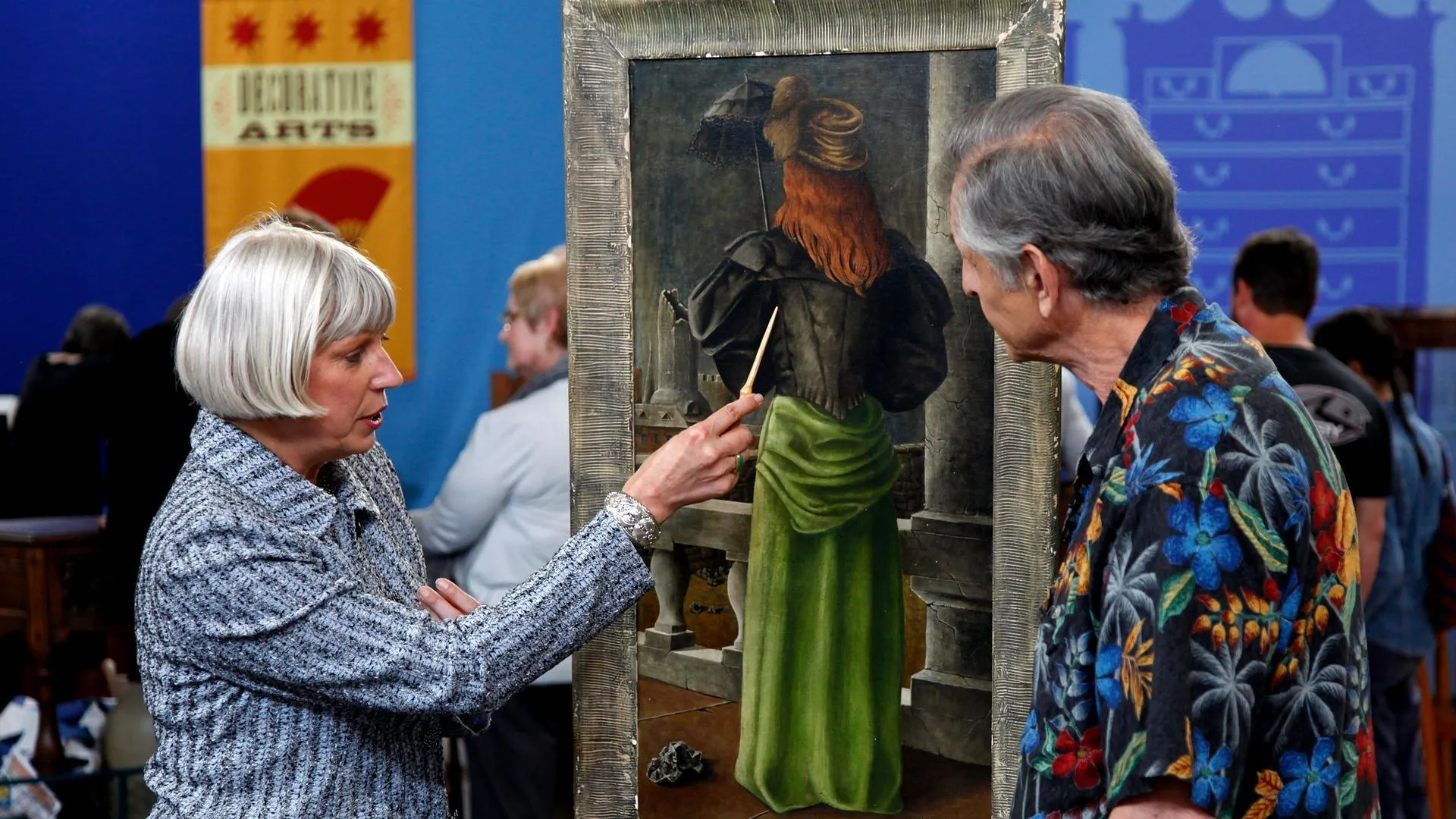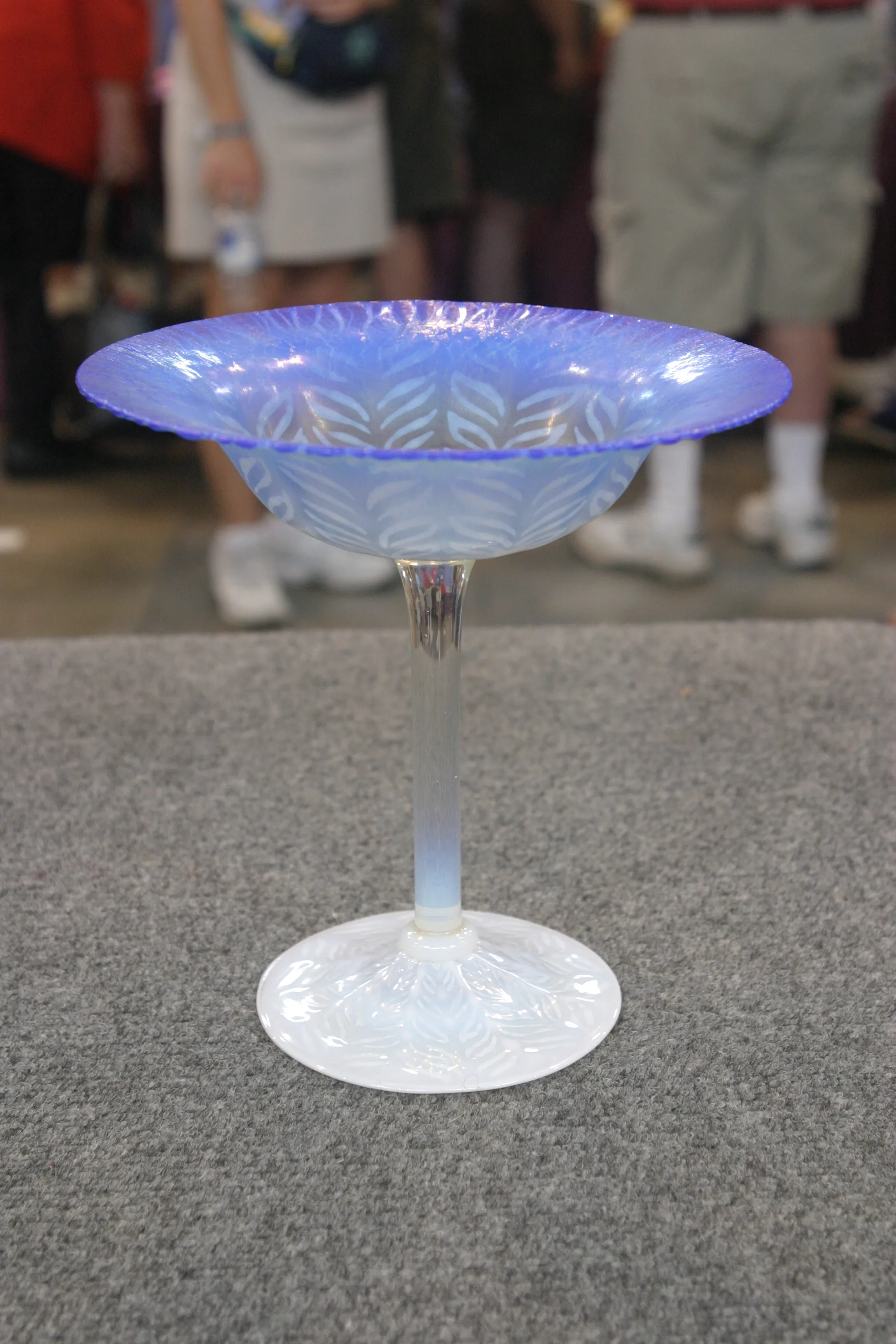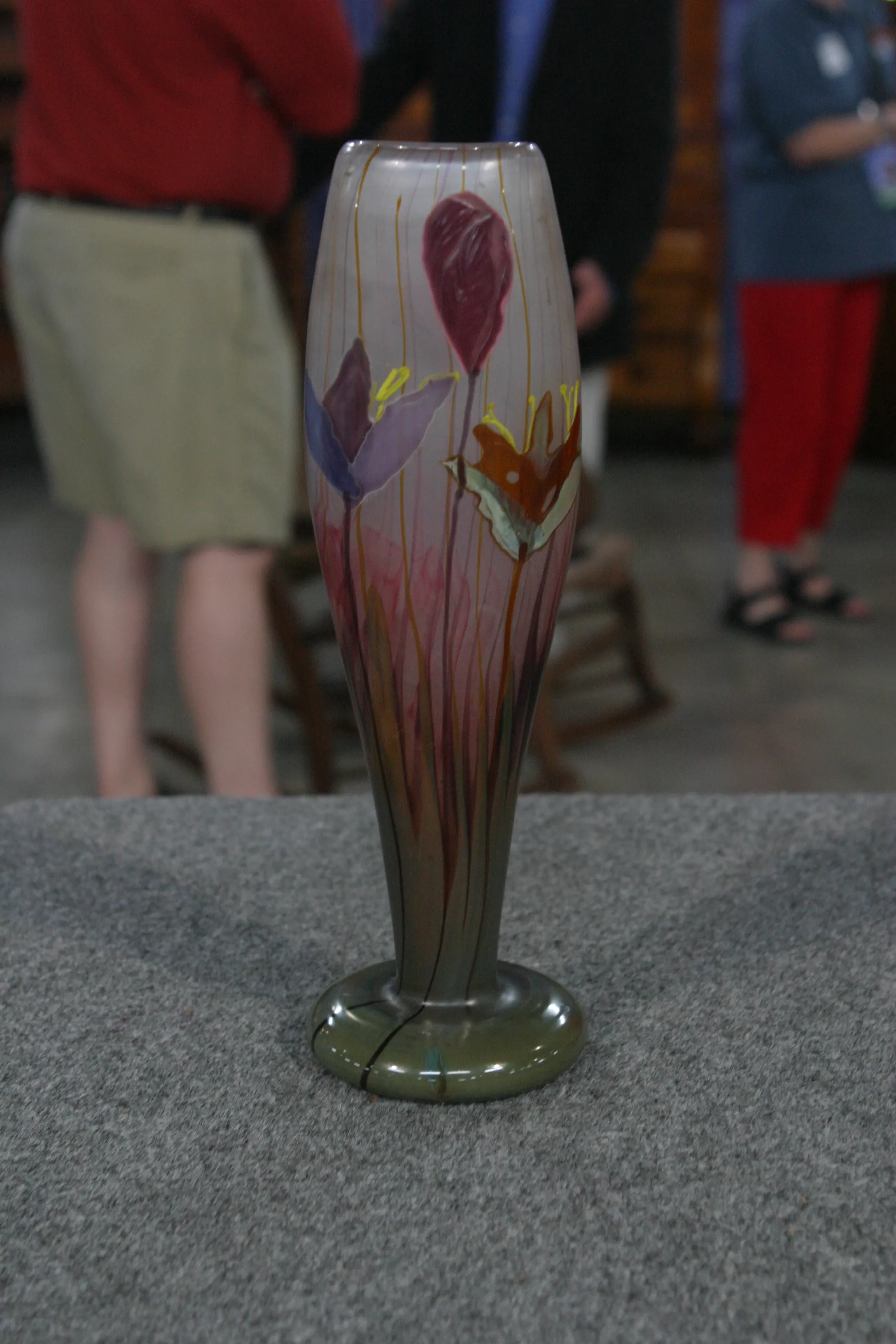GUEST: It was part of my father-in-law's house that he purchased in 1930.
APPRAISER: Mm-hmm.
GUEST: The house was built in 1905, and this supposedly was part of the original furnishings of that house when it was built in 1905. A Victorian house.
APPRAISER: Now, do you watch Antiques Roadshow?
GUEST: Oh yes, all the time. That's one of the reasons I'm here today, is because approximately 15 years ago, I don't know, I know it was before you had the remote on the television where you can stop it, the Roadshow on that particular night had a vase, and the vase had the same pattern as this. The appraiser called it the "Rabbit and Toadstool," and it was supposedly an Italian artist during the same vintage period of Tiffany. And as I remember, they appraised that vase for $13,000.
APPRAISER: Well, what I can tell you is, it's definitely not Italian.
GUEST: Oh, okay.
APPRAISER: But, what it is, it's a very fine example of New England Arts and Crafts lighting, probably dating from around the time the house was built, maybe 1905, maybe even 1910. And the reason why I say this is mainly because I'm looking at this border. Now, of course, you know the toadstools are in the eyes of the beholder. I see it more as a rabbit and snow trees, and this is a motif that actually was used on one of the prominent New England pottery companies on some of their pieces. This was a motif that they used.
GUEST: New England.
APPRAISER: In New England, yes, in the Massachusetts area. So it got me to thinking when I saw the shade, well, I know it's not a Tiffany shade, but the quality is very nice and the motif is really interesting and it's different. And I thought maybe it could be a Bigelow and Kennard shade, and that was a Boston company that did make some leaded glass shades. So I talked to a couple of my fellow appraisers. Some thought maybe it could be Bigelow Kennard, others said, "No, I don't think it is," based on the color of the glass and possibly the shape. So, what we're going to have to do is more research to find out what it is. But there are some great things about it. Under here, on the bodies of the rabbits, is what we call plating. It's an extra bit of plating. Instead of just having one layer of the stained glass, there is a second layer. Now you would see that often in Tiffany windows, and once in a very rare moment you might see it in a Tiffany lamp. And I haven't seen it that many times. That's a very unusual thing. It denotes a certain type of quality, so when you look through it, it's not completely white, but you have some darkness here, so it gives more of a three- dimensionality to the rabbit. It also has some beautiful granite kind of glass on the inside, too. It's a little pebbly in the surface. So I think that at a retail venue, in a very good shop that may sell Arts and Crafts lighting, this could sell for $10,000.
GUEST: Mm-hmm.
APPRAISER: If we could do more research and actually pinpoint who made it, it could be a lot more. But what I can assure you is, that regardless of who made it, it is a great example of American Arts and Crafts lighting.
GUEST: Thank you very much.
APPRAISER: You're welcome.











